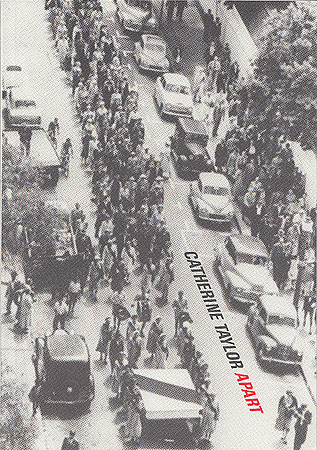Guest post by Scott Nadelson
By now it’s probably obvious that when I’m talking about envy, I’m really talking about influence. I want to learn from the visual artists I admire so much. I want to seek our common ground, to discover what we share, to strive toward what I find so powerful in their work.
As I’ve been writing about the exhibitions I recently saw in New York City, I’ve been thinking about one of our longest-lasting archetypes of the artist, one who serves as model or inspiration for writers, visual artists, and musicians alike. What is it about the story of Orpheus that keeps our attention so many years after lyre music has gone out of fashion?
A classical rendering of Orpheus
A contemporary one by artist Maxim Tyminko
Finally, Jean Cocteau’s cinematic version from 1950
Yes, there’s Orpheus’s passion for Eurydice, his brave journey to the underworld, his tragic grief, his beautiful music. But above all, what I find compelling about Orpheus is his refusal to obey the rules, his rejection of convention, and his defiant act of looking at what’s forbidden. After descending to Hades he refuses to heed the injunction from its inhabitants not to glance behind as he takes his wife back to earth. He looks, and Eurydice falls into the darkness, never to return.
In Ovid’s version of the story, Orpheus casts his forbidden glance in order to make sure that Eurydice is still with him, “fearful that she’d lost her way.” I read this less literally than metaphorically: What Orpheus fears is that his wife is in fact still dead, that she can’t really return to the world of the living. When he turns, he sees the face of death behind him and knows that his wife is lost to him forever. She is taken from him a second time not because he has broken the prohibition but because his attempt to rescue her from death was futile from the start, because death is always final. Orpheus’s forbidden glance brings him face to face with the fact of mortality, a fact he can no longer deny, and when he returns to the world he is inconsolable, “melancholy-mad,” sitting in “rags and mud,” living on “tears and sorrow.”
But something else happens to Orpheus in the midst of his renewed grief, something profound and transformative. Before being torn to pieces by “raging women” made wild by his beautiful singing and his refusal to sleep with them, he sits on a grassy hill to play his golden lyre. “A lovely place to rest,” Ovid tells us, but one that “needed shade.” And no sooner than Orpheus sings his first notes do all the trees of the world crowd around him, from the “silver poplar” to the “swaying lina,” from the “delicate hazel” to the “spear-making ash.”
His singing now isn’t just beautiful but metamorphic, magical, an art form that transcends pleasure and enjoyment to literally change the landscape. According to Ovid, before visiting the underworld Orpheus was “poet of the hour.” Now, having faced death and the horrible truth of mortality, he brings trees to a barren hillside. Informed by the knowledge of death, his art is lifted from momentary, passing fancy into legend. Despite what it cost him, his forbidden glance brings him greatness, and more important, infuses his song with a beauty that reshapes the world.
Orpheus remains one of our most powerful archetypes of the artist, not because of his solitary brooding, but because of the way he captures his ineffable encounter with the unknown and gives it form, translating it for those who’ll never experience it for themselves. This, above all else, is the role of the artist, no matter the medium: to see what we can’t or don’t want to see, and to present it to us in a form that doesn’t allow us to look away.
No one, to my mind, has embraced this act of exposing the forbidden with greater abandon than Chris Burden, the notorious performance artist of the 1970s, best known for pieces in which he has collaborators shoot him in the arm or crucify him to the hood of a car.
When I first learned about Burden in an art history class in college, my professor spoke about him as an art world pariah, someone who took experimentation too far, who was reckless, sensational, exploitative. But when I finally viewed clips of his work, I was surprised to find how quiet they are compared to the sensationalism that surrounds us on every mediated front, how spare and simple and restrained. While his pieces often involve danger and self-inflicted pain, they resist the sensationalism of their subject matter in order to explore some of our most fundamental questions: How do we relate to the bodies that contain us? How much can these bodies bear? How can we live in the face of our vulnerabilities and the violence that constantly threatens us?
In 1973, the year I was born, Burden bought a month’s worth of advertising time on a local TV station. After a highly produced ad for a dance music record anthology, video of one of Burden’s performances appeared in black and white, with only a simple graphic, the artist’s printed name followed by a handwritten title, “Through the Night Softly.” For ten seconds, TV viewers watched Burden, wearing only underwear, with his hands held behind his back, squirm across pavement covered in broken glass. The only sound was Burden’s heavy, grunting breath and the crunch of glass shards under his chest. And then the screen went blank, and he was quickly replaced by another highly produced ad, this one for shower soap.
I can only guess what viewers might have made of Burden’s ad while awaiting the return of a sitcom or baseball game, when they were staring at their TVs with the half-consciousness that advertising demands. The image passed so quickly that they might have wondered if they’d really seen it, or if they’d only imagined it. They might have believed that someone at the TV station had made a mistake, that they’d glimpsed something they weren’t supposed to see, that they should have turned away. But that image of a man crawling through glass must have burned in their minds; they must have carried it around with them for the next few days or weeks or months, and even if they wanted to forget it, it would show up in their dreams.
When Burden placed “Through the Night Softly” on TV, American involvement in the Vietnam War was winding down, after many gruesome years, and certainly the piece evokes images of soldiers crawling through mud and debris, images that must have been all too familiar to viewers by 1973. But what Burden seemed to intuit–decades before reality television and 24-hour cable news–is that ours is a culture in which looking isn’t really seeing. The images produced for us by advertisers are meant to lull, to erase thought rather than to provoke it, and the constant marketing of products drains meaning from even the hard facts of the nightly news. By slipping his ad between images of laundry detergent and motor oil, Burden ruptured the trance of his viewers, making them confront not only the horror of war and the ever-presence of mortality, but also the body’s incredible resilience, its fragile beauty. He cut a small slit in the surface of our mundane daily existence and gave us a brief, irresistible glimpse of what lay behind.
The TV was his hillside, broken glass his lyre, ten seconds of video his song.
Watch it again.
Pictures from: http://www.metahistory.org/dynamyth/OrpheusEurydice.php and http://www.khm.de/~maxim/projects/selectedworks/resources/egg.html


